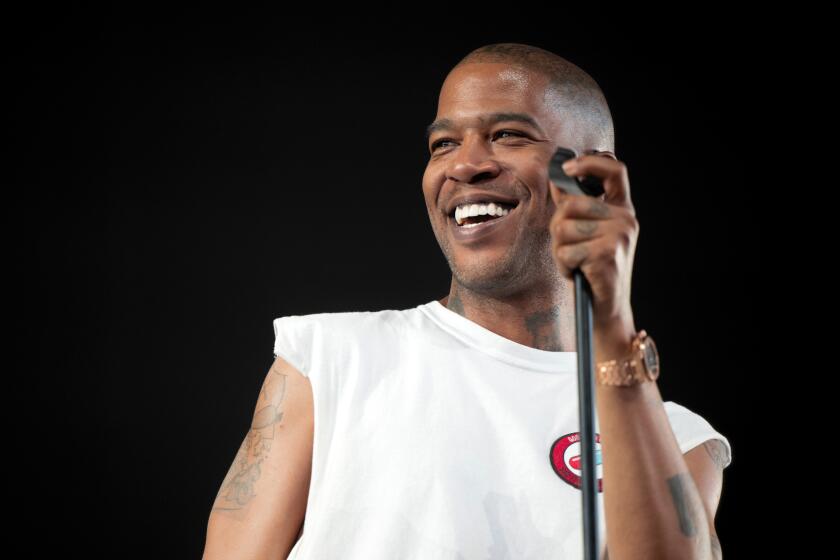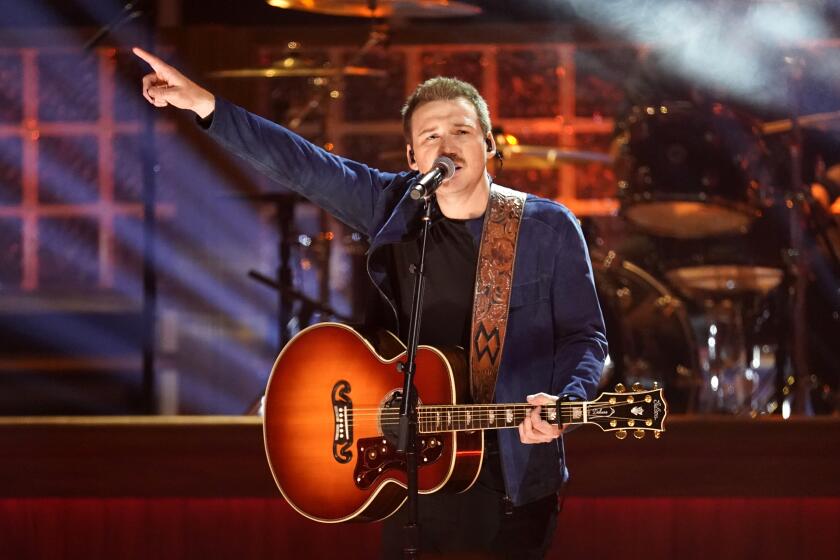THE RAW SOUNDS OF PROTOPUNK
Band: The Music Machine. Personnel: (original lineup) Sean Bonniwell, vocals, songwriting and guitar; Ron Edgar, drums; Keith Olsen, bass; Doug Rhodes, organ; Mark Landon, lead guitar. Record: “Best of the Music Machine,” Rhino Records. History: Caught up in the swirling excitement of soon-to-peak psychedelia, various American “garage bands”--several from Los Angeles--began to experiment in late ’66 and early ’67 with a brash, raw sound that would later be termed “protopunk.” Among them: Seeds, Standells and Music Machine. Inspired by English bands like the Yardbirds and the Who, these U.S. outfits discharged what might be called aggressive confusion, swinging their chief weapon--the chain-saw buzz of fuzztone guitar--at enemies both real and imagined. “Talk Talk” was Music Machine’s only big hit, but one that expressed the raging style with a fury exceeded at the time perhaps only by Love’s “Seven and Seven Is.” The band’s subsequent recordings for the Original Sound and Bell labels achieved little more than regional success. There was only one album, “Turn On.” In late ‘67, members began to drop out, including Olsen, who began a production career that led to albums with Fleetwood Mac and Pat Benatar. Bonniwell kept MM going two more years, then tried a solo turn with little luck. Sound: Psycho-rock at its finest and progenitor of such modern songs as “Institutionalized” by Suicidal Tendencies, “Talk Talk” has a charged-up, manic urgency that still delivers a punch. It’s hard to believe that a band able to wax something that powerful faded, but this smart compilation of singles, album cuts and four unreleased tracks shows that Bonniwell was never able to write anything quite comparable. Rockers like “Absolutely Positively” and “The People in Me” skillfully emit neurotic vibes but fall short of the hit’s musical drive and vocal tautness. Still, several songs have a semi-naive, garage-psychedelic charm and considerable energy, and the album ends with two unreleased cuts from 1969 that indicate the group was getting the knack for newly evocative, moody material just before it broke up.
More to Read
The biggest entertainment stories
Get our big stories about Hollywood, film, television, music, arts, culture and more right in your inbox as soon as they publish.
You may occasionally receive promotional content from the Los Angeles Times.






